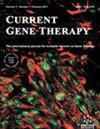Effect of Bovine Lactoferrin Treatment on Iron Homeostasis and Gene Expression Changes in Multiple Organ Dysfunctions During Wound Healing Process in Rats
IF 3.3
4区 医学
Q2 GENETICS & HEREDITY
引用次数: 0
Abstract
Background:: Injury systemically disrupts the homeostatic balance and can cause organ failure. LF mediates both iron-dependent and iron-independent mechanisms, and the role of LF in regulating iron homeostasis is vital in terms of metabolism. Objectives:: In this study, we evaluated the organ-level effect and gene expression change of bLf in the cutaneous repair process. Materials and Methods:: An excisional full-thickness skin defect (FTSD) wound model was created in male Sprague Dawley rats (180-250 g) (n = 48) fed a high-fat diet (HFD) and the PHGPx, SLC7A11 and SLC40A1 genes and iron metabolism were evaluated. The animals were randomly divided into 6 groups: 1- Control, 2- bLf (200 mg/kg/day, oral), 3- FTSD (12 mm in diameter, dorsal), 4- HFD + bLf, 5- HFD + FTSD, 6- HFD + FTSD + bLf. Histologically, iron accumulation was demonstrated by Prussian blue staining in the liver, kidney, and intestinal tissues. Gene expression analysis was performed with qPCR. Results:: Histologically, iron accumulation was demonstrated by Prussian blue staining in the liver, kidney, and intestinal tissues. Prussian blue reactions were detected in the kidney. PHPGx and SLC7A11 genes in kidney and liver tissue were statistically significant (P < 0.05) except for the SLC40A1 gene (P > 0.05). Expression changes of the three genes were not statistically significant in analyses of rat intestinal tissue (P = 0.057). Conclusion:: In the organ-level ferroptotic damage mechanism triggered by wound formation. BLf controls the expression of three genes and manages iron deposition in these three tissues. In addition, it suppressed the increase in iron that would drive the cell to ferroptosis and anemia caused by inflammation, thereby eliminating iron deposition in the tissues.牛乳铁蛋白处理对大鼠伤口愈合过程中铁稳态和多器官功能障碍基因表达变化的影响
背景损伤会破坏体内平衡,导致器官衰竭。LF 可介导铁依赖性和铁依赖性机制,LF 在调节铁平衡方面的作用对新陈代谢至关重要。研究目的本研究评估了 bLf 在皮肤修复过程中的器官效应和基因表达变化。材料与方法以饲喂高脂饮食(HFD)的雄性 Sprague Dawley 大鼠(180-250 g)(n = 48)为对象,建立切除性全厚度皮肤缺损(FTSD)伤口模型,并对 PHGPx、SLC7A11 和 SLC40A1 基因及铁代谢进行评估。动物被随机分为 6 组:1- 对照组,2- bLf(200 毫克/千克/天,口服)组,3- FTSD(直径 12 毫米,背侧)组,4- HFD + bLf 组,5- HFD + FTSD 组,6- HFD + FTSD + bLf 组。组织学上,肝脏、肾脏和肠道组织的普鲁士蓝染色显示了铁的积累。基因表达分析通过 qPCR 进行。结果组织学上,肝脏、肾脏和肠道组织的普鲁士蓝染色显示了铁的积累。肾脏中检测到普鲁士蓝反应。除 SLC40A1 基因(P> 0.05)外,肝肾组织中 PHPGx 和 SLC7A11 基因的表达均有统计学意义(P< 0.05)。在对大鼠肠道组织的分析中,这三个基因的表达变化无统计学意义(P = 0.057)。结论在由伤口形成引发的器官级铁变态损伤机制中。BLf 可控制三个基因的表达,并管理这三个组织中的铁沉积。此外,它还抑制了铁的增加,而铁的增加会促使细胞发生铁变态反应和炎症引起的贫血,从而消除组织中的铁沉积。
本文章由计算机程序翻译,如有差异,请以英文原文为准。
求助全文
约1分钟内获得全文
求助全文
来源期刊

Current gene therapy
医学-遗传学
CiteScore
6.70
自引率
2.80%
发文量
46
期刊介绍:
Current Gene Therapy is a bi-monthly peer-reviewed journal aimed at academic and industrial scientists with an interest in major topics concerning basic research and clinical applications of gene and cell therapy of diseases. Cell therapy manuscripts can also include application in diseases when cells have been genetically modified. Current Gene Therapy publishes full-length/mini reviews and original research on the latest developments in gene transfer and gene expression analysis, vector development, cellular genetic engineering, animal models and human clinical applications of gene and cell therapy for the treatment of diseases.
Current Gene Therapy publishes reviews and original research containing experimental data on gene and cell therapy. The journal also includes manuscripts on technological advances, ethical and regulatory considerations of gene and cell therapy. Reviews should provide the reader with a comprehensive assessment of any area of experimental biology applied to molecular medicine that is not only of significance within a particular field of gene therapy and cell therapy but also of interest to investigators in other fields. Authors are encouraged to provide their own assessment and vision for future advances. Reviews are also welcome on late breaking discoveries on which substantial literature has not yet been amassed. Such reviews provide a forum for sharply focused topics of recent experimental investigations in gene therapy primarily to make these results accessible to both clinical and basic researchers. Manuscripts containing experimental data should be original data, not previously published.
 求助内容:
求助内容: 应助结果提醒方式:
应助结果提醒方式:


